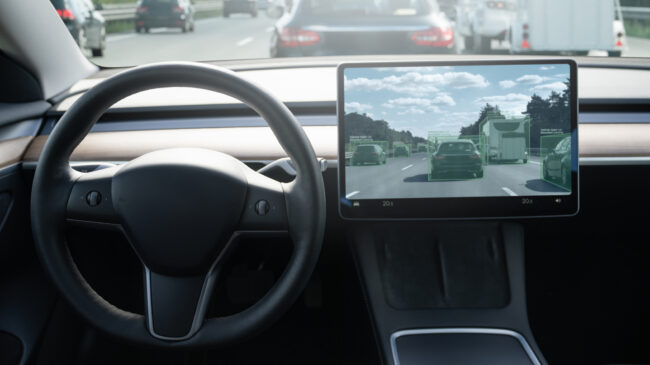California has been a leader in self-driving car technologies that could dramatically improve road safety and our access to employment and social opportunities. Unfortunately, special interest groups continue pushing onerous regulatory requirements designed to create another unworkable bureaucracy and stymie progress.
The COVID-19 pandemic lockdowns led to emptier roads and contributed to an outbreak of dangerous driving across the United States. In California, this translated to more than 2,500 additional traffic deaths from 2020 to 2022 than would have been predicted by the 2019 crash fatality rate. Road safety improved in 2023 but still has a long way to go.
The good news is that technology should eventually reduce or eliminate many causes of car crashes by replacing human drivers with fast-acting robots programmed to follow the law. Most of today’s autonomous vehicle developers call California home, and one—Waymo—has continuously offered commercial robotaxi service in San Francisco since last August.
Waymo’s safety record is impressive at this early stage. In September, a preliminary study coauthored with the Swiss Reinsurance Company found that Waymo’s driverless robotaxis in Phoenix and San Francisco led to a 76% reduction in property damage claim frequencies relative to the human driver baseline while eliminating bodily injury claims.
In December, Waymo released additional data on the seven million miles its driverless vehicles covered in Los Angeles, Phoenix, and San Francisco through Oct. 2023. Waymo estimated its robotaxis produced a 57% reduction in the police-reported crash rate and an 85% reduction in the “any injury reported” crash rate. This translates to 17 fewer injuries and 20 fewer crashes than a typical human driving the same miles on the same roads.
Beyond improving safety, removing human drivers from ride-sharing services and taxis would also benefit consumers by eliminating the largest share of operating costs. This would allow robotaxis to charge lower fares than today’s conventional for-hire vehicles while opening up new employment and social opportunities for low-income residents and people with disabilities who cannot drive themselves.
Unfortunately, some of California’s political class is threatening the promise of autonomous vehicles. In January, the Department of Motor Vehicles (DMV) approved expanding Waymo’s deployment permit to cover portions of Los Angeles and San Francisco. Despite this endorsement from DMV safety regulators, economic regulators at the California Public Utilities Commission (CPUC) inexplicably delayed what should have been a perfunctory approval. While the CPUC ultimately signed off on Waymo’s expansion, the episode highlights the state’s burdensome regulatory system full of too many veto points.
Stanford political scientist Francis Fukuyama coined the term “vetocracy” to describe our increasingly sclerotic political system, where narrowly focused special interests can exploit veto rights to prevent reforms that would be broadly beneficial. This dynamic is most obviously present in housing policy, where a handful of local NIMBYs can halt construction projects by alleging minor regulatory process defects. The vetocracy increasingly threatens autonomous vehicles in California, where opponents fearing competition from robotaxis and driverless trucks urge regulators to deny permits based on application page counts and other spurious arguments.
Assemblymember Freddie Rodriguez (D-Pomona) is sponsoring Senate Bill 915, which would require autonomous vehicles to be approved by each city and county in which they wish to operate. The bill would, in effect, authorize 540 new autonomous vehicle regulatory agencies across the state. Each local authority would have multiple ways to ban autonomous vehicles in its jurisdiction, making driving on public roads an unnavigable maze. The bill is supported by labor organizations such as the California Teamsters, which fears automated vehicles endanger its members’ jobs, like truckers and delivery drivers.
California’s increasingly hostile regulatory and business climate has already caused several autonomous vehicle developers to move testing and planned deployments to friendlier environments in Arizona and Texas.
Pushing away autonomous vehicles would needlessly deny Californians the forthcoming reduction in traffic deaths and accidents while reducing the state’s reputation as an innovation incubator.
A version of this column first appeared in the Orange County Register.

